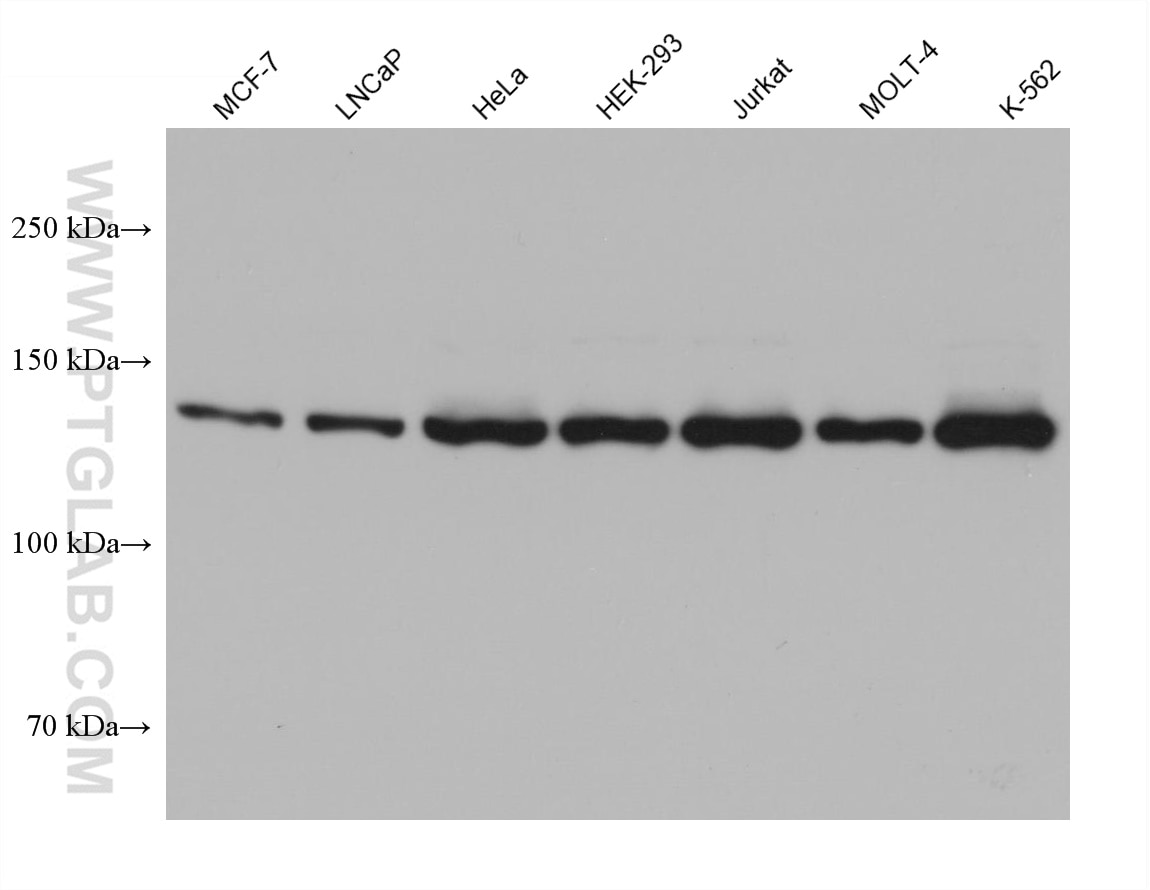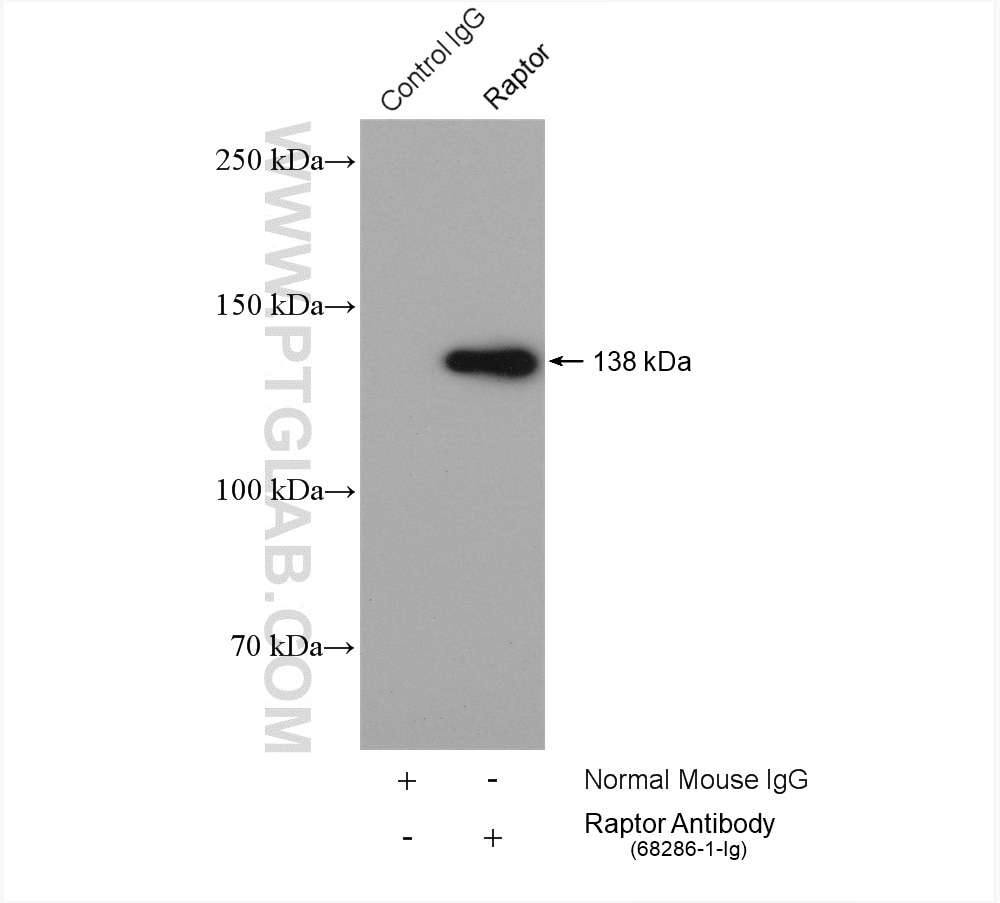Anticorps Monoclonal anti-Raptor
Raptor Monoclonal Antibody for WB, IP, ELISA
Hôte / Isotype
Mouse / IgG2b
Réactivité testée
Humain
Applications
WB, IP, ELISA
Conjugaison
Non conjugué
CloneNo.
1B8A12
N° de cat : 68286-1-Ig
Synonymes
Galerie de données de validation
Applications testées
| Résultats positifs en WB | cellules MCF-7, cellules HEK-293, cellules HeLa, cellules Jurkat, cellules K-562, cellules LNCaP, cellules MOLT-4 |
| Résultats positifs en IP | cellules HeLa, |
Dilution recommandée
| Application | Dilution |
|---|---|
| Western Blot (WB) | WB : 1:5000-1:50000 |
| Immunoprécipitation (IP) | IP : 0.5-4.0 ug for 1.0-3.0 mg of total protein lysate |
| It is recommended that this reagent should be titrated in each testing system to obtain optimal results. | |
| Sample-dependent, check data in validation data gallery | |
Applications publiées
| WB | See 2 publications below |
| IP | See 1 publications below |
Informations sur le produit
68286-1-Ig cible Raptor dans les applications de WB, IP, ELISA et montre une réactivité avec des échantillons Humain
| Réactivité | Humain |
| Réactivité citée | Humain |
| Hôte / Isotype | Mouse / IgG2b |
| Clonalité | Monoclonal |
| Type | Anticorps |
| Immunogène | Raptor Protéine recombinante Ag30131 |
| Nom complet | raptor |
| Masse moléculaire calculée | 1335 aa, 149 kDa |
| Poids moléculaire observé | 130-150 kDa |
| Numéro d’acquisition GenBank | BC136654 |
| Symbole du gène | Raptor |
| Identification du gène (NCBI) | 57521 |
| Conjugaison | Non conjugué |
| Forme | Liquide |
| Méthode de purification | Purification par protéine A |
| Tampon de stockage | PBS with 0.02% sodium azide and 50% glycerol |
| Conditions de stockage | Stocker à -20°C. Stable pendant un an après l'expédition. L'aliquotage n'est pas nécessaire pour le stockage à -20oC Les 20ul contiennent 0,1% de BSA. |
Informations générales
RPTOR, also named as KIAA1303 and RAPTOR Belongs to the WD repeat RAPTOR family. It is involved in the control of the mammalian target of rapamycin complex 1 (mTORC1) activity which regulates cell growth and survival, and autophagy in response to nutrient and hormonal signals; functions as a scaffold for recruiting mTORC1 substrates. mTORC1 is activated in response to growth factors or amino-acids. Amino-acid-signaling to mTORC1 is mediated by Rag GTPases, which cause amino-acid-induced relocalization of mTOR within the endomembrane system. Activated mTORC1 up-regulates protein synthesis by phosphorylating key regulators of mRNA translation and ribosome synthesis. mTORC1 phosphorylates EIF4EBP1 and releases it from inhibiting the elongation initiation factor 4E (eiF4E). mTORC1 phosphorylates and activates S6K1 at 'Thr-389', which then promotes protein synthesis by phosphorylating PDCD4 and targeting it for degradation.
Protocole
| Product Specific Protocols | |
|---|---|
| WB protocol for Raptor antibody 68286-1-Ig | Download protocol |
| IP protocol for Raptor antibody 68286-1-Ig | Download protocol |
| Standard Protocols | |
|---|---|
| Click here to view our Standard Protocols |
Publications
| Species | Application | Title |
|---|---|---|
Mol Cell Lysosomal cyst(e)ine storage potentiates tolerance to oxidative stress in cancer cells | ||
Cell Metab Pyruvate metabolism enzyme DLAT promotes tumorigenesis by suppressing leucine catabolism |



